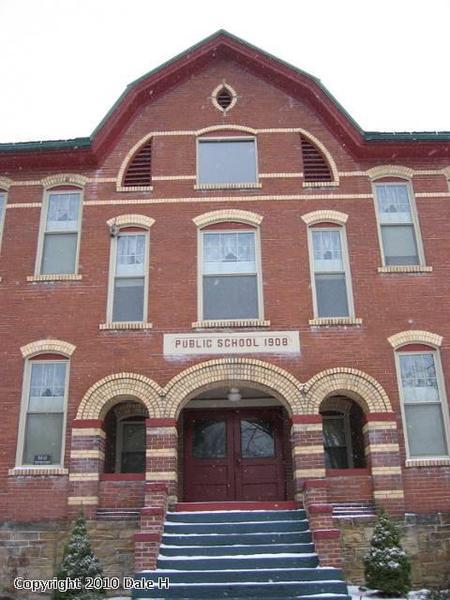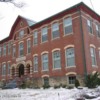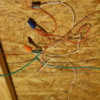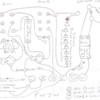Lots of people using Walwarts to drive Lemax accessories and LEDs,etc. The downside this is a maze of plugs and wiring and the inability to automate the accessory. I put mine on timers to turn on and off. There is time needed for people to get on and off the ride.
Here is a typical Walwart,cord cut so the jack and cord can be reused to plug in the accessory. It is labeled 4.5 volts DC, 900 ma. Click on any photo to enlarge.
When tested it actually puts out 5 volts DC on the El cheapo meter. The meter also shows polarity and the minus wire is determined on the cut piece,it is the one with the black stripe and goes to the outer jack connection.
The solution is a buck converter,which will replace the wall transformer. These cost about $2 each on Ebay from China. Just search buck converter. This one is Ac to DC, so there is no need to add a bridge rectifier,it is already built in. There is AC in and DC out,+ and -. On the lower piece,wires are soldered and color coded. Euro style barrier strips are added for easy screw terminal hookup.
Next, the AC leads are hooked to a KW set at 14 volts,the voltage of my accessory bus. The meter set on DC reading measures the output voltage hooked to the + and -. A small brass screw is turned until the meter reads 4.5 volts.
Next,it is tested on the accessory,in this case a Lemax bumper car ride. It works well. The converter set at 4.5 volts can also power one or two Miller signs. LED circuits or other applications also at whatever voltage needed.
The ride is placed on the layout,the wires ran through a hole and hooked to the barrier strip. I will add a timer circuit to turn it on and off. Bumper cars on the layout are a nice compliment to the circa 1953 Lusse bumper cars in the room. They are the same style,different from Dodgems and the scale is compatible with O.
Here are a few photos of the layout in progress,I am wiring the lights and accessories. The MTH and some other push button type accessories will be put on cycle timers to activate periodically. . Lights will be powered by a 600 watt garden transformer. The layout goes into a larger room,not shown.
Dale H















